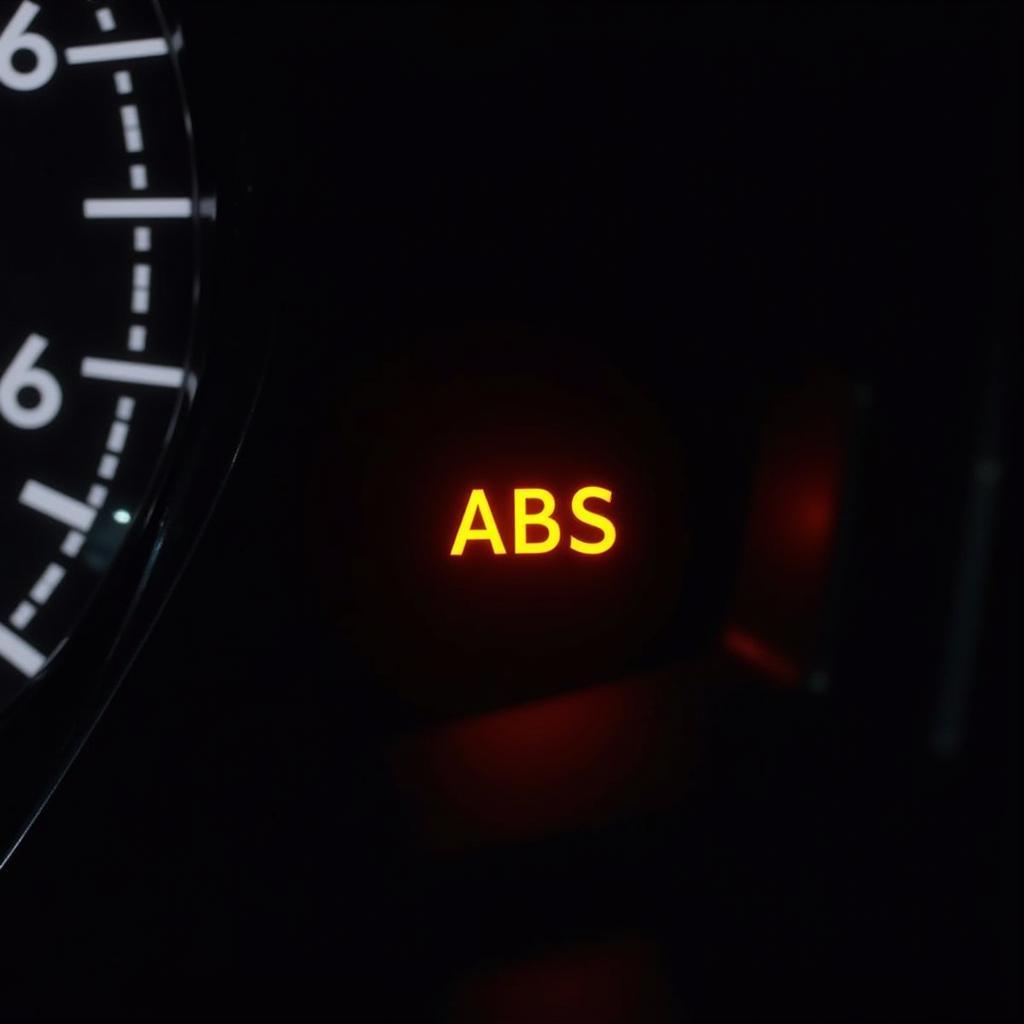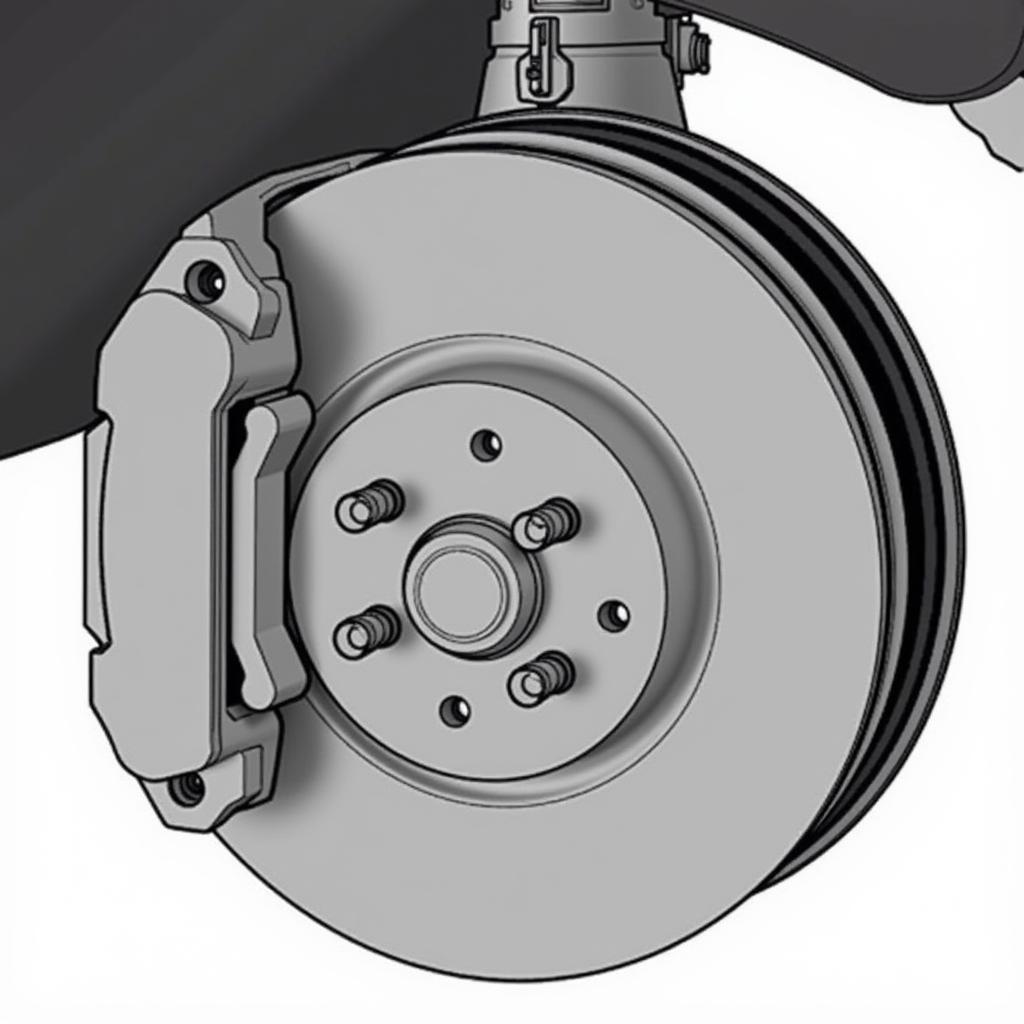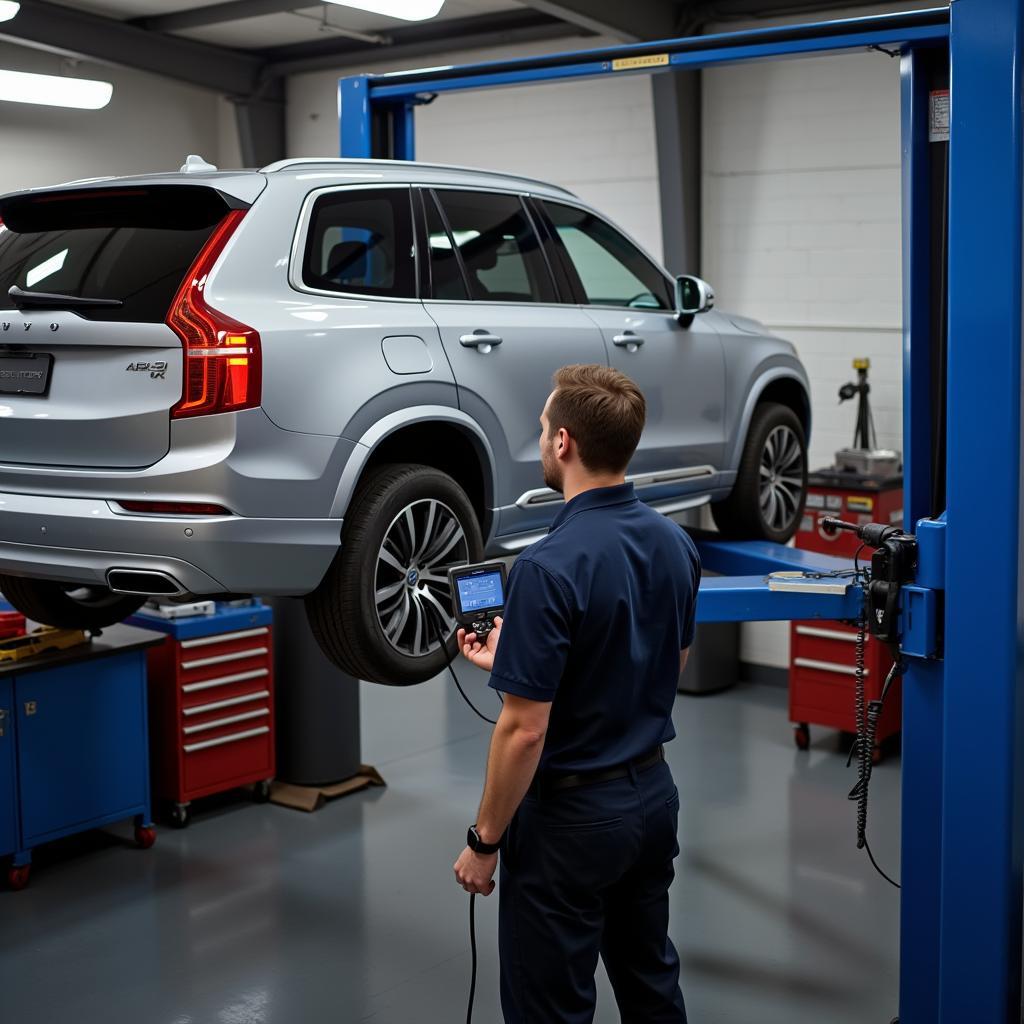An ABS brakes warning message illuminating on your Volvo XC90’s dashboard can be a jarring sight. This critical system is responsible for preventing your wheels from locking up during braking, maintaining steering control, and ultimately enhancing safety. Ignoring this warning could compromise your ability to handle your vehicle effectively, especially in emergency situations.
This comprehensive guide will delve into the common causes of an ABS warning light on your XC90, empower you with troubleshooting tips, and offer solutions to get you back on the road safely.
Understanding Your XC90’s ABS System
Before we dive into the potential culprits behind the warning message, it’s essential to grasp the fundamentals of your XC90’s Anti-lock Braking System (ABS).
The ABS operates on a network of components working in harmony:
- Wheel Speed Sensors: Strategically positioned at each wheel, these sensors continuously monitor the rotational speed of your XC90.
- Hydraulic Control Unit: This unit houses solenoids and valves responsible for regulating brake fluid pressure to each wheel.
- Electronic Control Unit (ECU): The brain of the ABS, the ECU processes data received from the wheel speed sensors, identifying potential wheel lock-up situations. It then directs the hydraulic control unit to adjust brake fluid pressure accordingly.
When the ECU detects an anomaly within the ABS, it triggers the warning light on your dashboard, signaling a potential malfunction.
Decoding the ABS Warning Light
While a glowing ABS warning light usually indicates an issue within the system, the severity can vary.
Here’s what the warning light might be telling you:
- Solid Light: This often signifies a complete ABS failure. While your regular brakes should still function, the anti-lock feature will be deactivated. It’s crucial to seek professional diagnosis and repair promptly.
- Flashing Light: A flashing light could indicate a less severe issue, potentially a temporary fault within the system. While immediate attention is still advised, you may have a bit more time to address the problem.
 Volvo XC90 Dashboard with ABS Warning Light
Volvo XC90 Dashboard with ABS Warning Light
Common Causes of an ABS Brakes Warning Message in your XC90
Several factors can trigger an ABS brakes warning message on your XC90. Here are some of the most common culprits:
1. Faulty Wheel Speed Sensors
As the primary data source for the ABS, wheel speed sensors are often the leading cause of warning lights.
Possible Causes:
- Debris or dirt accumulation: Road grime, brake dust, and other debris can interfere with the sensor’s ability to read wheel speed accurately.
- Physical damage: A damaged sensor due to impact or corrosion can lead to inaccurate readings or complete signal loss.
- Worn wiring or connections: Over time, wiring harnesses and connections can become frayed or corroded, disrupting communication between the sensor and the ECU.
2. Malfunctioning Hydraulic Control Unit
The hydraulic control unit is responsible for modulating brake fluid pressure based on the ECU’s instructions.
Possible Causes:
- Internal valve or solenoid failure: These components can wear out or become contaminated over time, affecting their ability to regulate pressure effectively.
- Leaking brake fluid: A leak in the hydraulic control unit can lead to low fluid levels and compromise system performance.
3. Low Brake Fluid Levels
A common culprit behind various brake system issues, low brake fluid levels can also trigger an ABS warning light.
Possible Causes:
- Brake pad wear: As your brake pads wear down, the caliper pistons extend further to compensate, requiring more brake fluid. This can eventually lead to low fluid levels if not addressed.
- Brake fluid leak: A leak anywhere in the brake system, including lines, hoses, or calipers, can result in low fluid levels.
4. Faulty ABS Control Module
While less common, a malfunctioning ABS control module (ECU) can also be the root of the problem.
Possible Causes:
- Electrical malfunction: A short circuit, blown fuse, or other electrical issues can disrupt the ECU’s operation.
- Software glitch: In rare cases, a software glitch within the ECU can trigger an ABS warning message.
 Volvo XC90 Wheel Speed Sensor Location
Volvo XC90 Wheel Speed Sensor Location
Troubleshooting an ABS Brakes Warning Message on Your XC90
While it’s always recommended to consult a qualified technician for a thorough diagnosis, here are some initial troubleshooting steps you can take:
- Check Your Brake Fluid Level: This is the easiest and one of the most crucial checks. If the fluid level is low, carefully top it up with the recommended brake fluid for your XC90.
- Inspect Your Wheel Speed Sensors: Carefully examine the sensors at each wheel for any visible signs of damage, debris, or corrosion. Clean them gently with a soft brush and electrical contact cleaner.
- Scan for Diagnostic Trouble Codes: A diagnostic scan tool, available at most auto parts stores, can retrieve specific error codes stored within your XC90’s ECU. These codes can pinpoint the problem area within the ABS system, providing valuable insights for further diagnosis.
Important Note: If you suspect a problem with your ABS system, exercise extra caution while driving. Avoid hard braking and maintain a safe distance from other vehicles.
Seeking Professional Help: When to Call Your Mechanic
While some ABS issues might seem straightforward, it’s crucial to remember that dealing with a sophisticated safety system like the ABS requires specialized knowledge and equipment.
Here’s when you should seek professional help:
- The ABS warning light remains illuminated despite troubleshooting efforts.
- You experience unusual braking behavior, such as pulsating brakes or difficulty stopping.
- You’re unsure about performing any of the troubleshooting steps safely.
A qualified Volvo technician will have the expertise, diagnostic tools, and access to genuine Volvo parts to ensure your XC90’s ABS is restored to full functionality.
 Volvo XC90 Undergoing Diagnostics
Volvo XC90 Undergoing Diagnostics
Conclusion: Prioritizing Your XC90’s Safety
An ABS brakes warning message in your Volvo XC90 is a critical signal that shouldn’t be ignored. By understanding the system, recognizing warning signs, and addressing the issue promptly, you can help ensure your safety and the optimal performance of your vehicle. Remember, maintaining a proactive approach to vehicle maintenance is always the best way to prevent unexpected surprises on the road.
Frequently Asked Questions (FAQs)
1. Can I drive my XC90 with the ABS warning light on?
While your regular brakes should still function, it’s strongly advised not to drive with an illuminated ABS warning light. The anti-lock feature will be deactivated, potentially compromising your safety during emergency braking.
2. How much does it cost to fix an ABS light on a Volvo XC90?
The repair cost can vary significantly depending on the underlying cause. A simple sensor replacement might cost a few hundred dollars, while a more complex issue like a faulty hydraulic control unit could require a more substantial investment.
3. How often should I check my XC90’s brake fluid level?
It’s recommended to check your brake fluid level at least once a month. Additionally, check it whenever you notice any changes in braking performance.
4. Can I reset the ABS warning light myself?
While it’s possible to reset the warning light using a diagnostic scan tool, it’s crucial to address the underlying problem first. Simply resetting the light without resolving the issue will only mask a potentially dangerous situation.
5. Does my Volvo XC90 need a special type of brake fluid?
Yes, Volvo recommends using DOT 4 brake fluid for the XC90. Using the wrong type of brake fluid can damage your braking system and compromise its performance.
